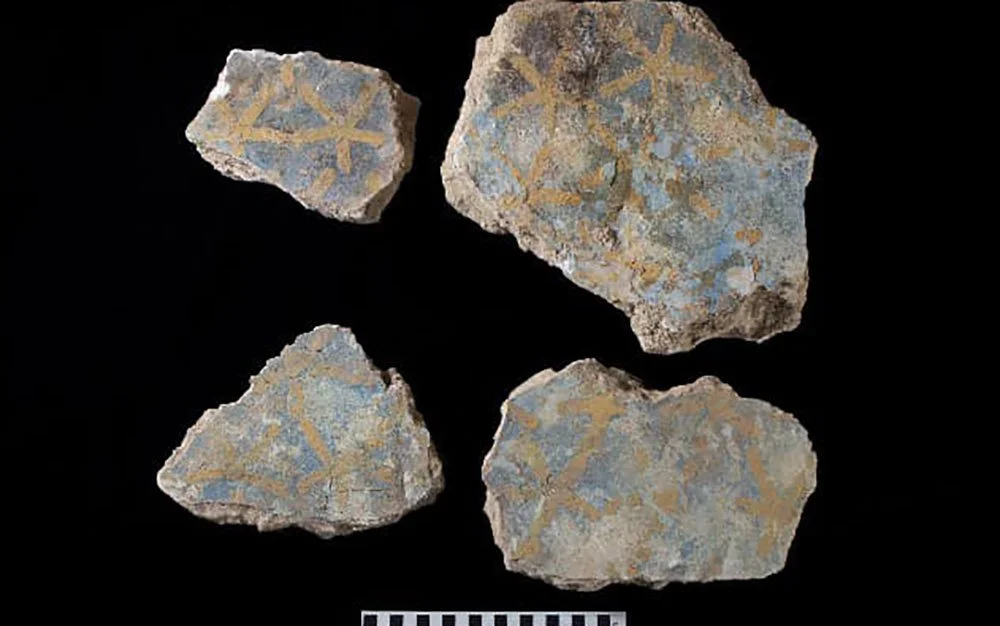A Pharaoh Resurfaces: The Lost Tomb of Thutmose II…Found!
Hold on to your linen headwraps, friends, because one of the most thrilling discoveries in Egyptology has just unfolded beneath the Theban cliffs—and it involves a long-lost king, a starry ceiling, and a tomb hidden in plain sight for more than 3,000 years.
We’re talking about Pharaoh Thutmose II, a somewhat shadowy figure from Egypt’s powerful 18th Dynasty. While he’s often overshadowed by his more famous wife (and half-sister), Hatshepsut, this lesser-known ruler has just made a grand reappearance—and let’s just say, he’s fashionably late.
The Discovery That Rocked the Valley
In early 2025, a British-Egyptian archaeological team announced that they had uncovered a royal tomb in the rugged Western Wadis, just beyond the Valley of the Kings in Luxor. Designated Wadi C-4, this tomb is believed to be the long-lost resting place of Thutmose II, who reigned around 1492–1479 BCE.
What made this find particularly spine-tingling? This is the first pharaoh’s tomb discovered in over a century—since good ol’ King Tut himself captured the world’s imagination in 1922.
Now, let’s be clear: this tomb wasn’t lined with gold chariots or overflowing with untouched treasures. In fact, it had been heavily damaged by ancient floods and looters (those guys were busy, even back then). But what archaeologists did find was even more important for historical research.
A Sky Full of Stars—and the Amduat
Despite its rough condition, the tomb revealed incredible artwork that’s still largely intact. One of the most magical features? A ceiling painted deep blue with golden stars, meant to represent the night sky—a celestial roof for a divine king.
Even more exciting: archaeologists found fragments of the Amduat, the sacred funerary text that tells the story of Ra’s journey through the underworld each night. This wasn’t just decoration. These inscriptions were spiritual road maps meant to guide Thutmose II to his rightful place among the gods.
But… Was He Even In There?
As you might guess, thousands of years of tomb robbing and Nile flooding don’t exactly make for pristine preservation. So, was Thutmose II still inside?
Short answer: no. Or at least, not anymore.
It seems that sometime after his burial, the tomb was damaged or compromised, and priests in later dynasties may have relocated his body for safekeeping. (They did the same for several other kings, including his wife Hatshepsut and stepson Thutmose III.)
Still, the team found alabaster jars inscribed with Thutmose II’s name, as well as references to Hatshepsut, which helped confirm the tomb’s original owner.
Queen Hatsepshut’s Tomb
Why This Discovery Matters
You might be asking, “Why all the fuss over a mostly empty tomb?” Great question.
This discovery fills a huge gap in the historical record. Thutmose II has always been something of a mystery. He reigned briefly, didn’t leave behind many monuments, and had his legacy largely eclipsed by his extraordinary wife. But finding his tomb confirms his place in the royal line—and gives us new insight into how even less-glamorous pharaohs were honored and remembered.
Plus, it reveals more about the sacred geography of the Theban necropolis. The fact that his tomb was located in the Western Wadis, a more remote and lesser-explored area, suggests there may be other royal tombs still waiting to be found.
A Reminder That Egypt Still Has Secrets
If this incredible discovery tells us anything, it’s that Egypt never stops surprising us. The sands are still whispering secrets, and tombs like this are a powerful reminder that we’ve only just scratched the surface (sometimes literally).
Want to walk the same rocky paths that lead to hidden royal tombs? Want to feel the awe of standing in the footsteps of pharaohs and explorers alike?
With Kemet Spiritual Journeys, you can visit the tombs of the Valley of the Kings, the Western Wadis, and beyond, seeing firsthand the places where history continues to reveal itself, one discovery at a time.
Plan your trip today at kemetspiritualjourneys.com—because you never know what lies around the next bend in the Nile.




